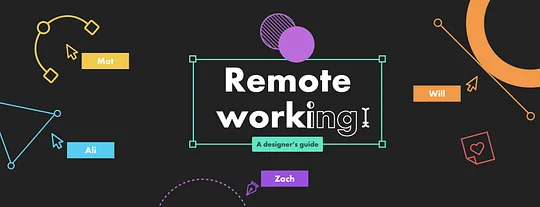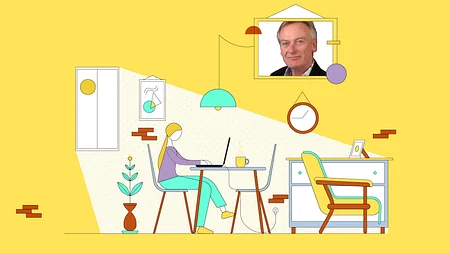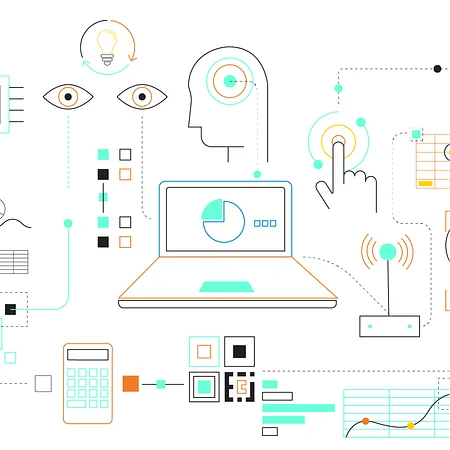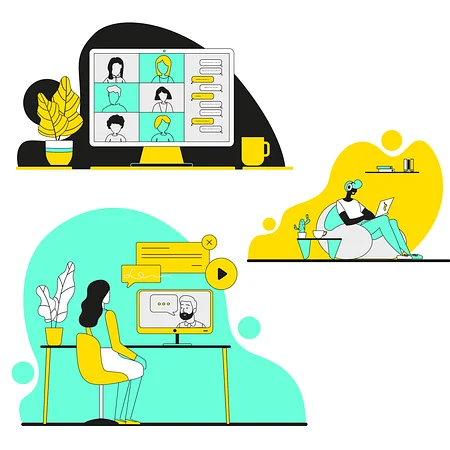Working remotely: A designer’s guide

2020 has been a turbulent year to say the least. Where the home office was once a luxury, for many of us, it’s now a staple.
Almost overnight, we lost the immediacy of face-to-face communication. Information and ideas became buried within countless Slack, Google and email notifications, and the general office chit-chat that we loved to hate became a distant memory.
But for us as a design team, we’re approaching this as a learning opportunity.
The pandemic has forced us to evolve at breakneck speed. While every business has their unique challenges and circumstances, it’s been amazing to see how the design industry has flexed to continue meeting the needs of #1 (aka, the client).
From running remote design sprints to collaborating in real-time with team members, we’re quickly learning how to make wfh, work for us.
The tools that rule ⚒️
In some ways, the new norm has pushed us into the future by necessity; we have a lot to learn from new tools and ways of working. And the tools that allow for easy, real-time collaboration have really taken the limelight.
Take Figma, for example. Granted, not all of us have a whiteboard to hand for the quick sketching of ideas, but the ability to have several designers working in the same digital file makes demonstrating ideas much easier. Until recently, I think a lot of us assumed that this type of ideation could only happen in person.
Similarly, digital platforms like Miro and Mural have enabled us to conduct remote design sprints more effectively than we expected.
One challenge, however, has been making sure that all participants have a platform to communicate their ideas and that we’re all speaking the same interaction language. Again, we’re still evolving the process to make it work for us - practice makes perfect!
Running sessions like teaching clients how to draw and wireframe effectively means they can get their ideas across quickly, which helps the team understand their thinking and run remote sessions at pace.
At the end of the design process, one of our favourite tools has been Lookback. It allows designers to watch user-testing interviews, take time stamped notes and surface valuable insights - all from home.
This makes me wonder: what product direction will these design tools will move in next?
It’s possible that the next iterations of these products will focus even more heavily on tools and features that aid collaboration and make remote working more seamless than ever.
This makes me wonder: what product direction will these design tools will move in next?
Missing the face-to-face? 🤝
That said, it’s become glaringly obvious how much we took for granted the energy we got from in-person interaction. From hustling around a whiteboard, scribbling down ideas and peppering the walls with post-it notes.
Being able to tap your fellow designer on the shoulder and asking ‘What do you think of this?’ now seems like a novelty.
So how can we replicate this from behind a screen?
We’ve found that having a Slack channel always open and ready to be the breeding ground for ideas, screenshots and sketches is a great way to mimic these more ad-hoc interactions. Encouraging quick video calls to discuss a design challenge - rather than tackling it in isolation - has also proven helpful.
And it’s not just about the work. Social communication is just as important (we’re big believers in that here at 11:FS).
Throughout lockdown, design tribe meetings have allowed the team to discuss the more trivial matters of design. Whether that’s ranking our favourite typefaces, showcasing the good, the bad and the ugly typography in our local area, or just a quick game of Drawasaurus to break up the day (if you haven’t played it yet, we can only apologise if you become as addicted as we have…)
Keep talking 🗣️
It’s not just catch-ups over a coffee in the office kitchen that we miss. Remote working also presents challenges for how we interact with clients.
For designers, presenting work - both final executions and work in progress - is an important stage of the process. This is where we get invaluable insights and feedback from the people that know their brand inside out.
Being remote, it can be difficult to convey ideas and strategic design decisions, and it’s also harder to read a client; their feelings and emotions towards the design can easily be lost in translation (no matter how good the WiFi is).
The best solution for us is to maintain an open channel of communication. Daily rituals like stand-ups and working scrums become even more important to make sure every stakeholder has oversight.
Time differences present even more challenges. We experimented with pre-recording design presentations and review materials and sending them over to clients early so that they had time to digest the designs, before having a catch-up after. This turned out to be really effective, as clients came to the reviews prepared with feedback that we could discuss and resolve. We’re particularly big fans of the Figma comment tool, which allows clients to tag us in individual items.
Design tools have made it easier than ever to feel connected in a role that previously relied so heavily on in-person interaction.
Looking forward 🌅
Our hopes for a pandemic-free Christmas may have been dashed, and it could be some time before we return to the office. When we do, it’s probably going to look a little different (i.e. fewer biscuit tins and a lot more hand sanitiser).
But what can we take from this experience? Reflecting on what we’ve learnt is key to staying agile and adaptive.
As a designer, it’s been encouraging to see how efficiently the industry has adapted. Design tools and communication software have made it easier than ever to feel connected in a role that previously relied so heavily on in-person interaction.
Of course, the benefits of remote-working are hard to ignore (who doesn’t prefer the one minute commute from the bedroom to the living room?) and certain tools will help to accelerate this transition away from the office. We’ve learnt that flexibility is vital, and spending our 9-5 in the office is no longer necessary to design beautiful products our clients will love.




